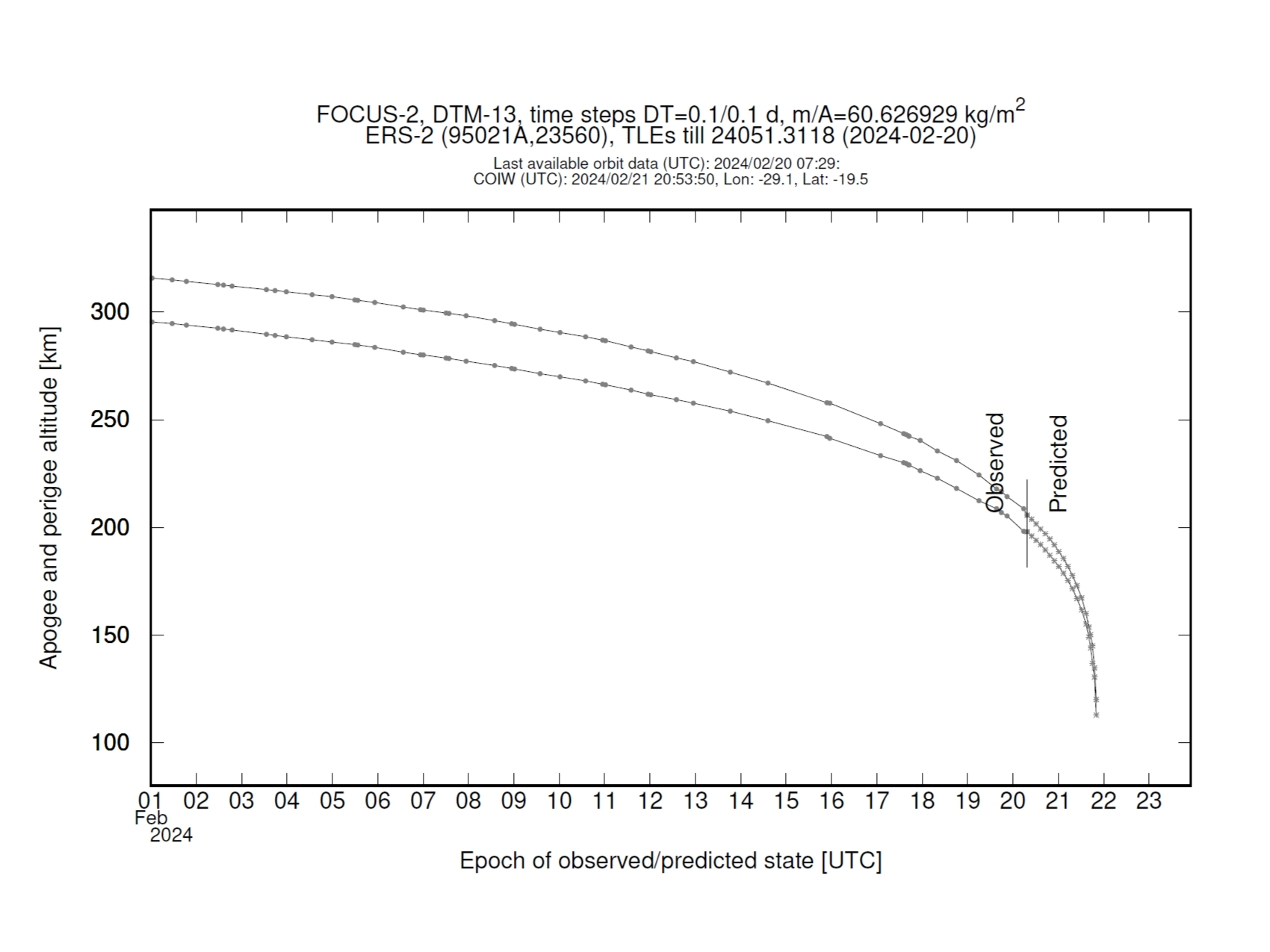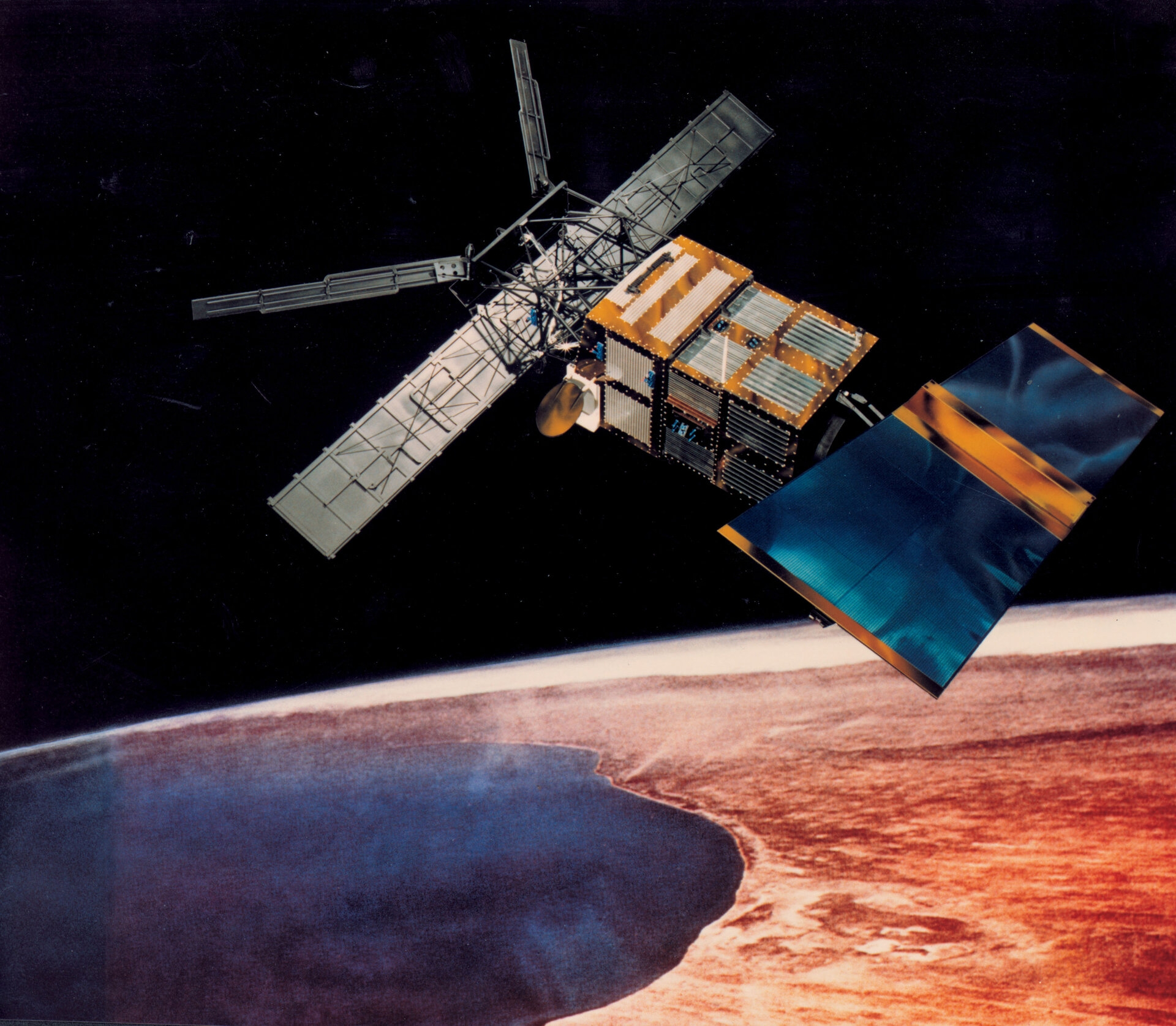A European Space Agency spacecraft is making an uncontrolled nosedive into Earth’s atmosphere – with elements of the 2.3-ton spent satellite likely to survive the plunge into purgatory.
The exact time and place above Earth that the radar-scanning ESA European Remote Sensing (ERS-2) augers in is unknown, but a new prediction of the spacecraft’s demise has been issued.
Using the most recent data, ESA’s Space Debris Office predicted as of 2:30 p.m. EST (1930 GMT) on Tuesday (Feb. 20) that the reentry of ESA’s ERS-2 satellite will take place at 11:32 a.m. EST (1632 GMT) on Wednesday (Feb. 21).
Related: Big, doomed satellite seen from space as it tumbles towards a fiery reentry on Feb. 21 (photos)
The uncertainty in this prediction is now just (+/- 7.48 hours), according to an ESA statement.
“This uncertainty is due primarily to the influence of unpredictable solar activity, which affects the density of Earth’s atmosphere and therefore the drag experienced by the satellite,” ESA adds.
Leftovers
As for the ERS-2 re-entry itself, there’s likely to be post-re-entry spacecraft leftovers.
“It is likely that some parts survive the re-entry, as on average between 10 and 20 percent of the mass for large objects does,” says Simona-Elena Nichiteanu, a media relations officer in the communication department at the European Space Operations Centre (ESOC). ESOC serves as the main mission control center for ESA in Darmstadt, Germany.

Component survival
As for the ERS-2 component survival to Earth’s surface, Nichiteanu told Space.com that the biggest and heaviest fragments that might survive reentry into the atmosphere are the 4 tanks (heaviest), the 3 internal panels supporting instruments (largest cross section) and the Synthetic Aperture Radar (SAR) antenna structure (largest fragment assuming it does not fragment at all).

A vast majority of ERS-2 will “burn up” in the atmosphere, ESA experts explain. Furthermore, given that the Earth is largely ocean water-rich, chances are for splash down of any remaining spacecraft components.
Orbital debris regulation
The fall of ERS-2 can be viewed both as a calling card from space and a wake-up call.
“While the ESA should be lauded for its efforts to de-orbit the ERS-2, it should be unsurprising that a 2.3-ton satellite launched into Earth orbit without any enforceable orbital debris regulation will then return to Earth’s atmosphere as orbital debris in an explosive uncontrolled reentry,” said Michael Runnels, an assistant professor of business law at California State University, Los Angeles.
“Indeed, these events highlight the continuing need for enforceable orbital debris regulation to support the sustainable exploration and scientific investigation of outer space,” Runnels said.



